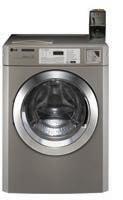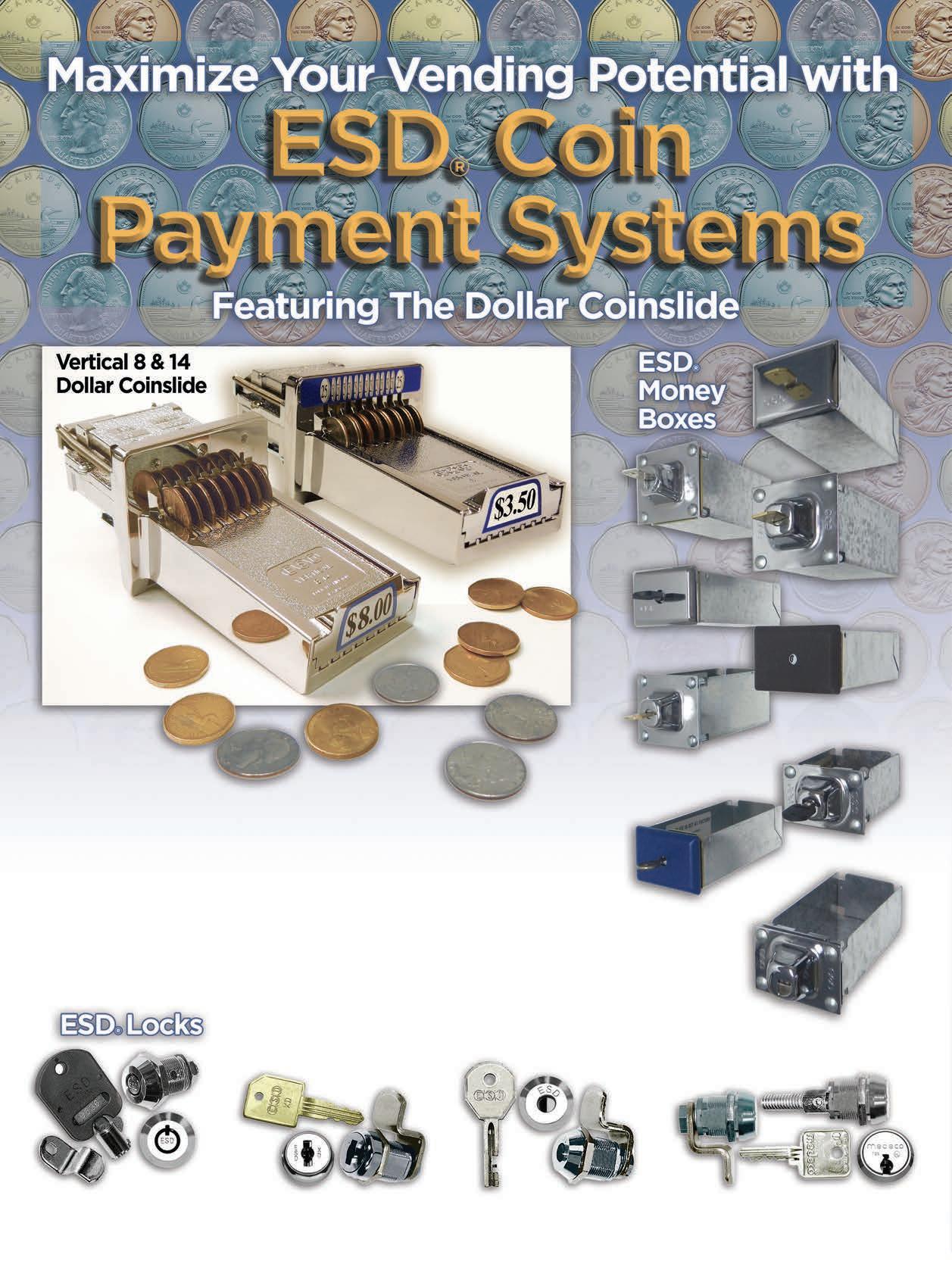






















































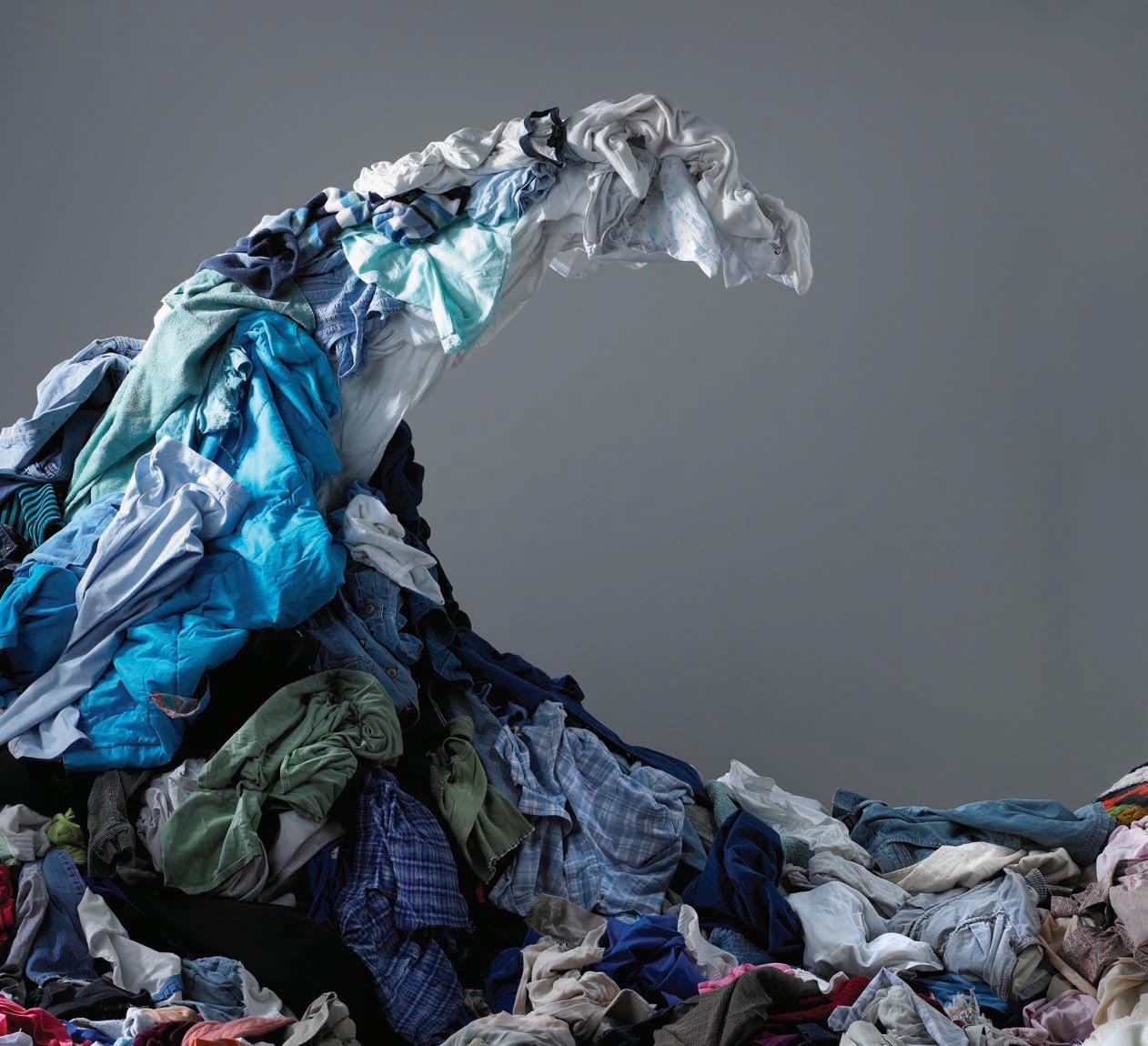




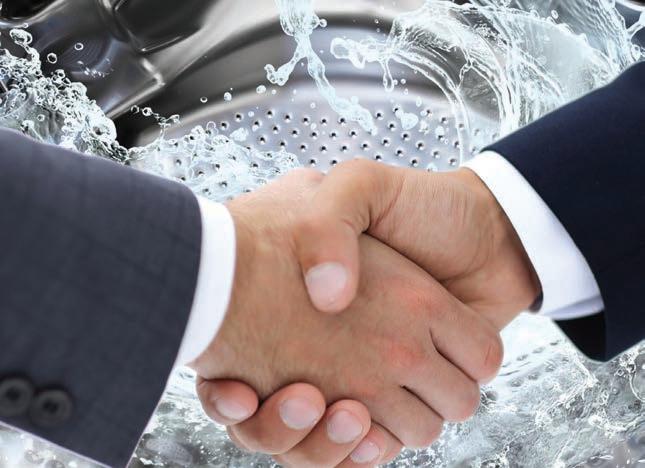
or offer the use of Wi-Fi to waiting customers laundering their clothes, they will be vulnerable to cyber threats. The first step in improving your cybersecurity is understanding your risk of attack, and where you can make the biggest improvements. We offer some tips, courtesy of the Federal Communications Commission.






Owning and operating more than one laundromat at a time has more advantages than disadvantages, retired multi-store owner Paul Russo believes. If done right, you can enhance the sales, profit and performance for each mat. The obvious disadvantage is more work, and most of the typical mat headaches. Russo looks at location strategies, branding, personnel, maintenance and more in support of branching out.



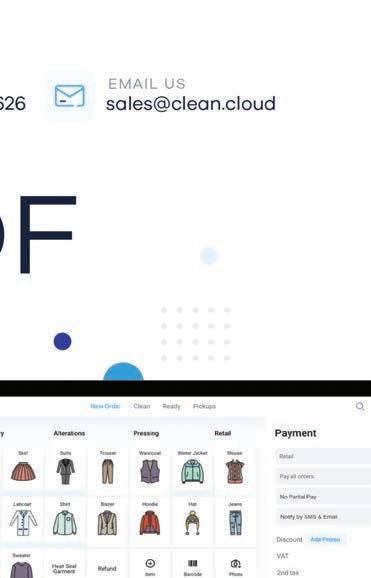


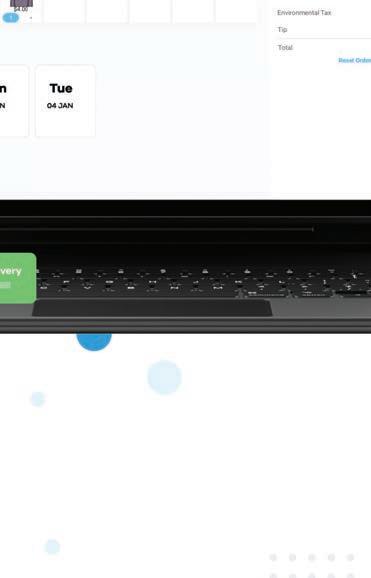
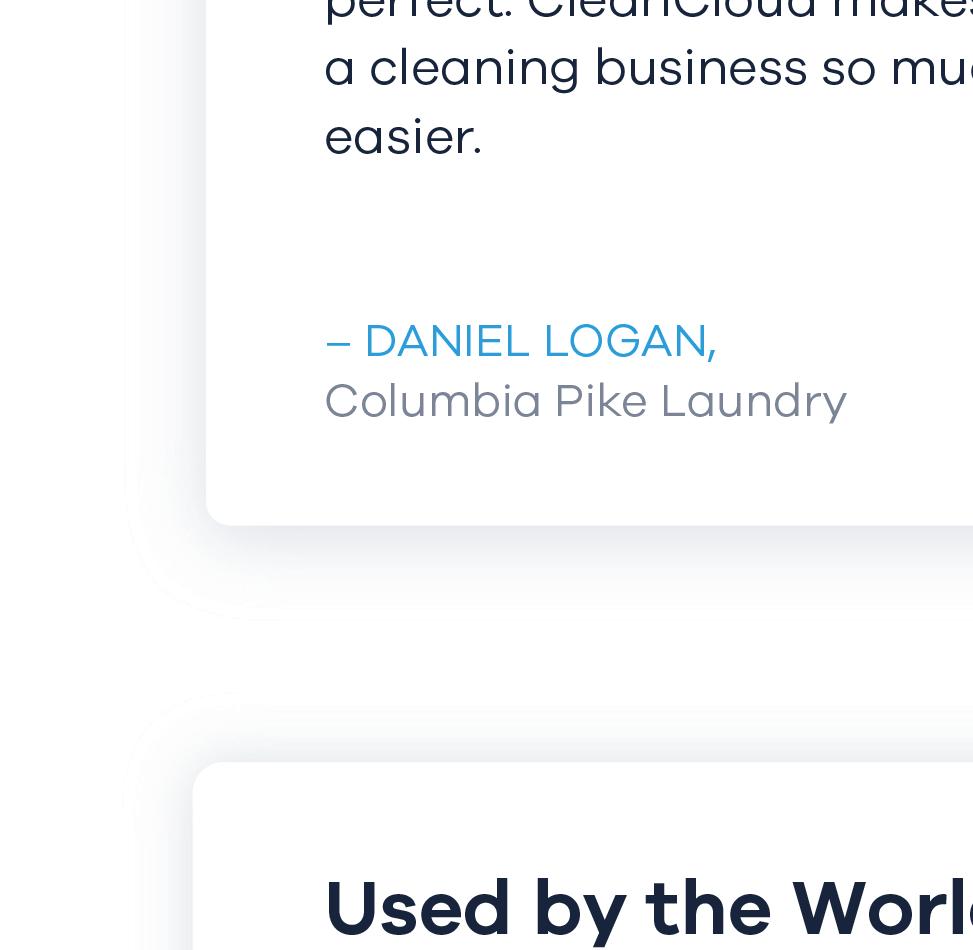


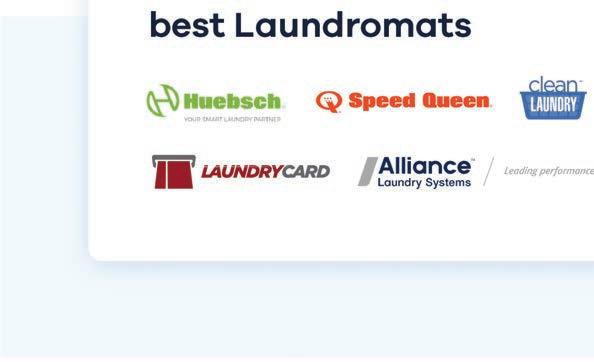
 Beggs
Beggs
Charles Thompson, Publisher
E-mail: cthompson@ATMags.com Phone: 312-361-1680
Donald Feinstein, Associate Publisher/ National Sales Director
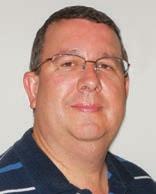
E-mail: dfeinstein@ATMags.com Phone: 312-361-1682
Bruce Beggs, Editorial Director
E-mail: bbeggs@ATMags.com Phone: 312-361-1683
Mathew Pawlak, Production Manager
Nathan Frerichs, Digital Media Director
E-mail: nfrerichs@ATMags.com Phone: 312-361-1681
This month’s cover story visits the topic of landlord relations. When it comes right down to it, a laundry tenant’s relationship with their landlord can be just as important to their business as the lease that spells out how the property housing their washers and dryers is to be occupied and paid for.
I spoke to a trio of laundromat owners to get a sense of how they and their respective landlords stay in touch and hash out the issues that affect them.
Every landlord-tenant relationship is unique, of course. Some are more friendly than others. But even in those instances when a tenant actively dislikes their landlord (or vice versa), I think it’s fair to say that keeping an open line of communication, backed by a good understanding of the lease document that’s been agreed to, puts a laundry tenant in the best position for success.
Laundry operators have their fair share of headaches to deal with. Staying in touch with the landlord will help prevent adding another. •••••
Elsewhere in this issue, in observance of the just-ended Cybersecurity Awareness Month, we have an article on best practices for securing your business’s computers and Wi-Fi. And columnist Paul Russo, retired after having owned multiple New York City stores over the years, weighs the demands of multi-store ownership and suggests ways to best address them. •••••
On a personal note, November marks the start of my 23rd year covering the textile care industry. It’s appropriate that Thanksgiving falls during the month, because I have plenty to be thankful for. And thank you for supporting American Coin-Op!
Bruce Beggs Editorial DirectorMain: 312-361-1700
American Coin-Op (ISSN 0092-2811) is published monthly. Subscription prices, payment in advance: U.S., 1 year $46.00; 2 years $92.00. Foreign, 1 year $109.00; 2 years $218.00. Single copies $9.00 for U.S., $18.00 for all other countries. Published by American Trade Magazines LLC, 650 West Lake Street, Suite 320, Chicago, IL 60661. Periodicals postage paid at Chicago, IL and at additional mailing offices.
POSTMASTER, Send changes of address and form 3579 to American Coin-Op, Subscription Dept., 125 Schelter Rd., #350, Lincolnshire, IL 60069-3666. Volume 62, number 11. Editorial, executive and advertising offices are at 650 West Lake Street, Suite 320, Chicago, IL 60661. Charles Thompson, President and Publisher. American Coin-Op is distributed selectively to owners, operators and managers of chain and individually owned coin-operated laundry establishments in the United States. The publisher reserves the right to reject any advertising for any reason.
© Copyright AMERICAN TRADE MAGAZINES LLC, 2021. Printed in U.S.A. No part of this publication may be transmitted or reproduced in any form, electronic or mechanical, without written permission from the publisher or his representative. American Coin-Op does not endorse, recommend or guarantee any article, product, service or information found within. Opinions expressed are those of the writers and do not necessarily reflect the views of American Coin-Op or its staff. While precautions have been taken to ensure the accuracy of the magazine’s contents at time of publication, neither the editors, publishers nor its agents can accept responsibility for damages or injury which may arise therefrom.
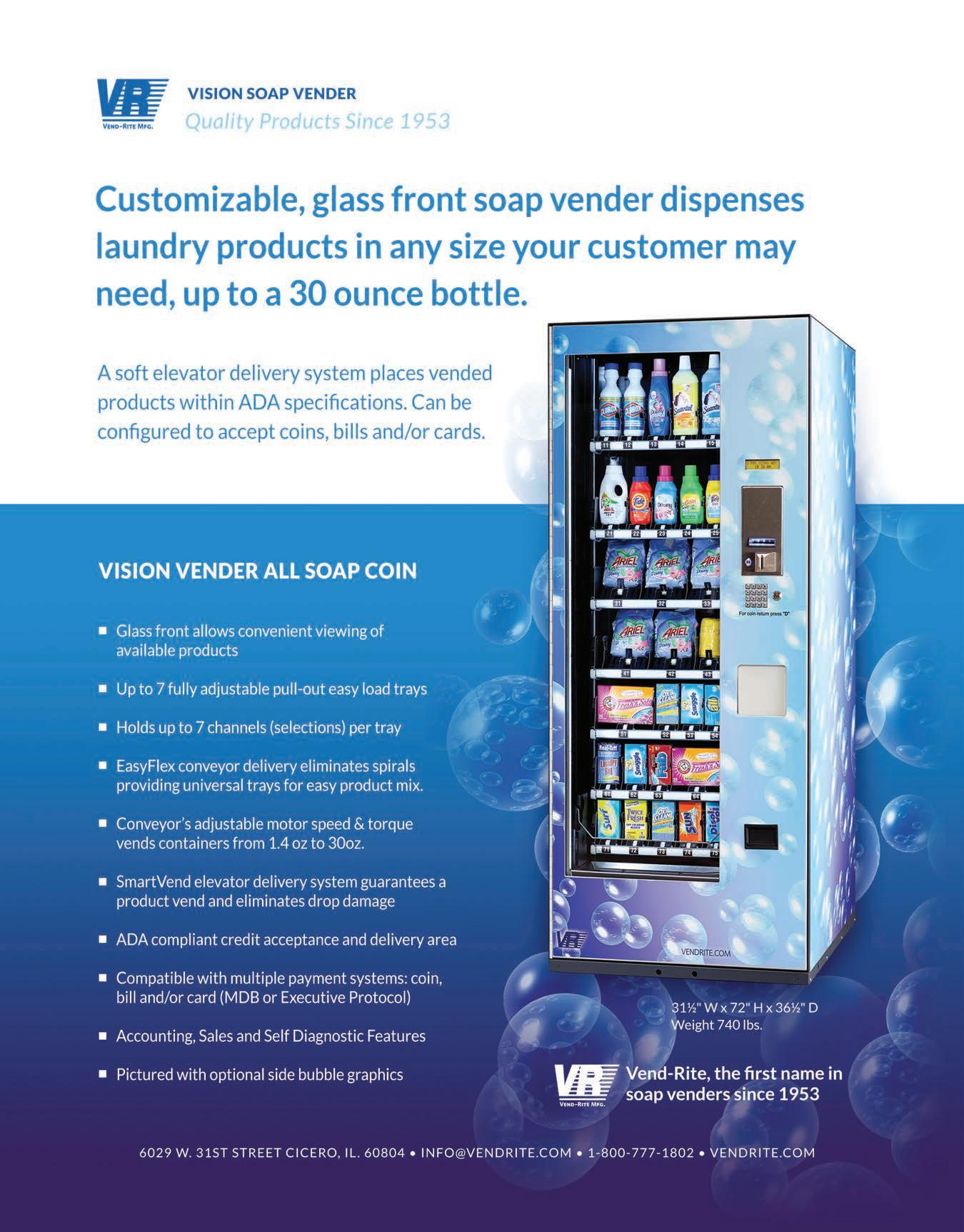
Now more than 18 months into the coronavirus pandemic, small businesses frequently struggle to fill open jobs. Recent polling shows that nearly 90% rate hiring as “somewhat or very difficult,” and two-thirds report having unfilled positions.
Things aren’t quite as stark among self-service laundries, based on the results of this quarter’s American Coin-Op Your Views survey, but it’s still been a significant challenge for ownership.
Roughly 58% of store owners polled say they’re “properly staffed,” but 37.5% say they’re either “slightly understaffed” (29.2%) or “severely understaffed” (8.3%). The remaining 4.2% are “severely overstaffed.”
Most respondents blame the labor shortage on the government assistance that’s been in place since COVID-19 has gripped the country.
“No one wants to work. Can make enough money staying home, doing nothing,” offers one respondent.
Another camp says the health risk from continual face-to-face contact with customers has applicants expecting premium pay.
Online job search sites (37.5%) and word of mouth/referrals (33.3%) are the primary methods that laundry operators use to find and hire employees today. Another 25% rely on in-store displays.
Among those who use an online jobs board, Indeed.com is most favored; no one taking the survey said they use Monster, ZipRecruiter, LinkedIn or Glassdoor. Facebook and a state job site were cited as other recruitment tools used.
Respondents were asked about changes they have put in place to make their laundry more attractive to potential employees or to retain current staff. Here are some of their answers:
• “Offering higher wages and adding company-paid benefits such as (insurance).”

• “Higher salaries, free employee wash, monthly bonuses.”

• “More frequent cleaning. Paper towels, spray bottles with cleaner and hand sanitizer available as soon as you walk in.”
• “We haven’t made changes to our hiring practices. While the numbers of applicants are down when a position is available, we are seeing more qualified candidates applying.”
The pandemic-related government programs will have to end before the labor shortage gets any better, several respondents believe. But a laundry still needs workers, so it’s just a matter of try and try again.
“Treat staff fairly, train (them) well, work on the rough spots and praise them when they do well,” suggests one operator, while another says, “Keep trying. You will get people but it takes effort.”
American Coin-Op’s Your Views survey presents an unscientific snapshot of the trade audience’s viewpoints. Due to rounding, percentages may not add up to 100%.
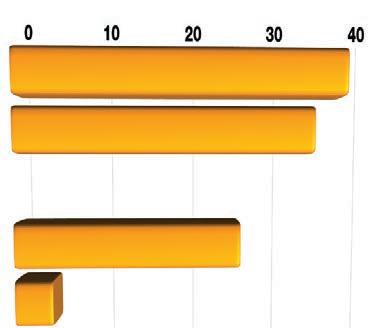
www.americancoinop.com
Subscribers to American Coin-Op emails are invited to participate anonymously in the survey. To better define owner/operator opinions and industry trends, the entire trade audience is encouraged to take part.
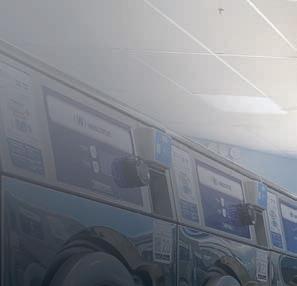

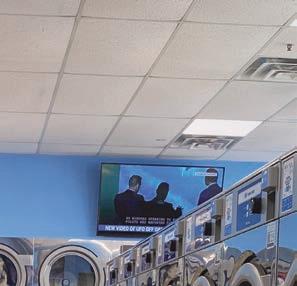
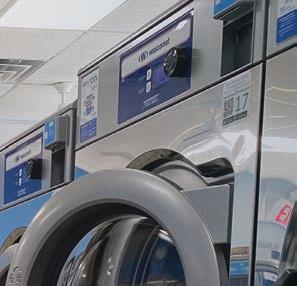

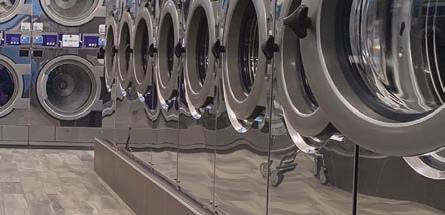
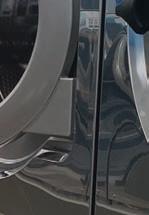

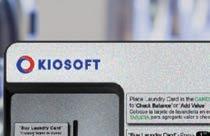
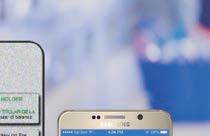
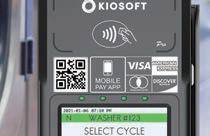
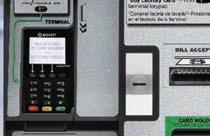
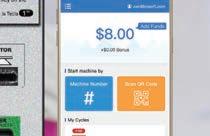

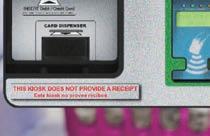





As long as vended laundries use computers in their business operations, or offer the use of Wi-Fi to waiting customers laundering their clothes, they will be vulnerable to cyber threats.
The first step in improving your cybersecurity, according to the U.S. Small Business Administration (SBA), is understanding your risk of an attack, and where you can make the biggest improvements. The Federal Communications Commission and the Department of Homeland Security are among the agencies offering various tools and resources a laundry owner could use to assess the risk and help create a plan of action for their business.
Following are some tips from the FCC:
Train Employees in Security Principles — Set up basic security practices and policies for employees, such as requiring strong passwords, and appropriate internet use guidelines that detail penalties for violating company cybersecurity policies. Establish rules of behavior describing how to handle and protect customer information and other vital data.
Protect Information, Computers, and Networks from Cyber Attacks — Having the latest security software, web browser, and operating system are the best defenses against viruses (harmful programs intended to spread from computer to computer and give cybercriminals access to your system), malware (software intentionally designed to cause damage to computers or networks), and other online threats, so keep machines clean. Set antivirus software to run a scan after each update. Install other key software updates as soon as they are available.
Provide Firewall Security for Your Internet Connection — A firewall is a set of related programs that prevent outsiders from accessing data on a private network. Make sure the operating system’s firewall is enabled or install free firewall software available online.
Create a Mobile Device Action Plan — Mobile devices can create significant security and management challenges, especially if they hold confidential information or can access the corporate network. Require users to password-protect their devices, encrypt their data, and install security apps to prevent criminals from stealing information while the phone is on public networks. Be sure to set reporting procedures for lost or stolen equipment.
Make Backup Copies of Important Business Data and Information — Regularly back up the data on all computers. Critical data would include word processing documents, electronic spreadsheets, databases, financial files, human resources files, and accounts receivable/payable files. Back up automatically if possible, or at least weekly, and store the copies either
offsite or in the cloud.
Control Physical Access to Your Computers and Create User Accounts for Each Employee — Prevent access or use of business computers by unauthorized individuals. Make sure a separate user account is created for each employee and require strong passwords. Administrative privileges should only be given to trusted key personnel and IT staff.
According to the SBA, a strong password is made up of 10 characters or more and includes at least one uppercase letter, at least one lowercase letter, at least one number, and at least one special character (such as ! or $).
Secure Your Wi-Fi Networks — If you have a Wi-Fi network for your workplace, make sure it is secure, encrypted, and hidden. To hide your Wi-Fi network, set up your wireless access point or router so it does not broadcast the network name, known as the Service Set Identifier (SSID). Password-protect access to the router.
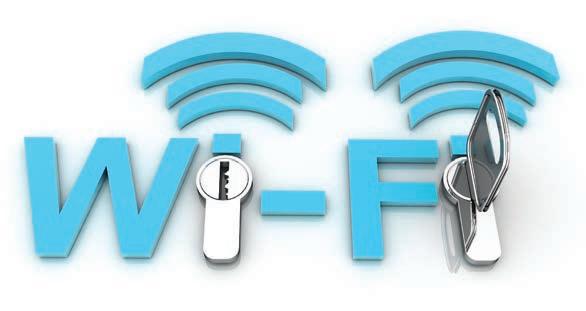
It’s become fashionable (if not expected) to offer a wireless internet connection to laundry customers. Once you’ve determined how many customers may use it at any one time and what they’ll be using it for (checking emails or streaming video, for example), that’ll help you determine the bandwidth you’ll need.
Setting up a separate wireless access point dedicated to customer use is the most secure option and will keep your private business information safe from anyone going online in your store. Change the password regularly to help keep it secure.
Employ Best Practices on Payment Cards — Work with banks or processors to ensure the most trusted and validated tools and anti-fraud services are being used. You may also have additional security obligations pursuant to agreements with your bank or processor. Isolate payment systems from other, less secure programs, and don’t use the same computer to process payments and surf the internet.
Limit Employee Access, Authority to Install Software — No one employee should have access to all your systems. Employees should only be given access to the specific systems that they need for their jobs, and should not be able to install software without permission.
Passwords and Authentication — Require employees to use unique passwords and to change them every three months. Consider implementing multi-factor authentication that requires additional information beyond a password (e.g., a security code sent to a phone) to gain entry. Check with your vendors that handle sensitive data, especially financial institutions, to see if they offer multi-factor authentication for your account. ACO
Wi-Fi and computers are commonplace today but so are security risks(Photo: © galina.legoschina/Depositphotos)



























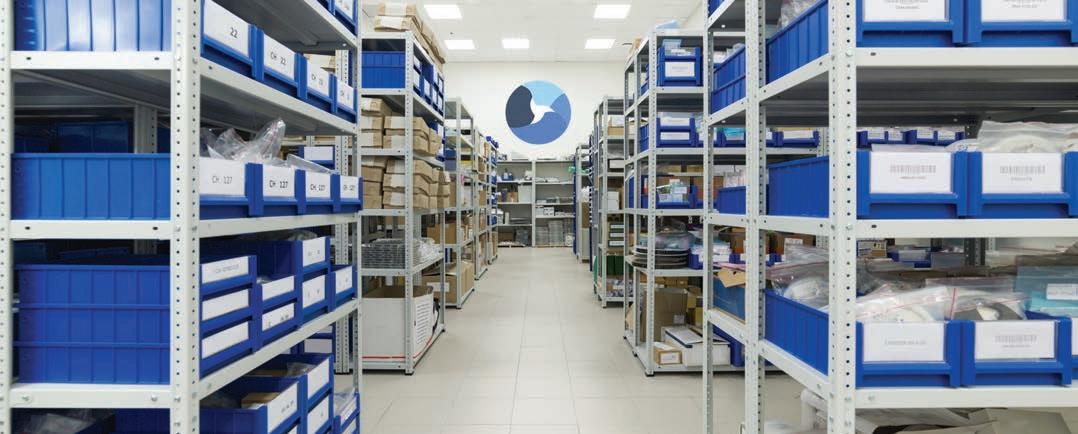


Owning and operating more than one laundromat at a time has more advantages than disadvantages. If done right, you can enhance the sales, profit and performance for each mat. You can enjoy some efficiencies of scale, such as better buying power from vendors. Landlords will look upon you much more favorably than if you’re just starting your first mat with no experience. You can shuttle employees from one mat to the others (bailed me out many times when one was slammed with drop-offs).
The obvious disadvantage is more work, and most of the typical mat headaches, including floods, crime, faltering equipment, and people issues.
But mats are a natural to operate at multiple locations because many are already being run at least partially by absentee ownership. However, I caution anyone to learn the business inside and out first before entrusting your mat to be operated by others for you. This includes employees and family.
You may love Uncle Joe, but does he have the ability to run a business? Also, just because he’s your relative doesn’t mean that he won’t steal from you. Family has screwed up many a small business. A son or daughter may not have the same ability or determination, or even
the interest, to run your mats.
Location Strategies — Once my first mat was up and running successfully, I set my sights on the next one about two years later. I found one about six miles away, between the first store and my home. It was on the same street, making it easy for customers to drive to the other location if needed. This can come in handy over the course of ownership.
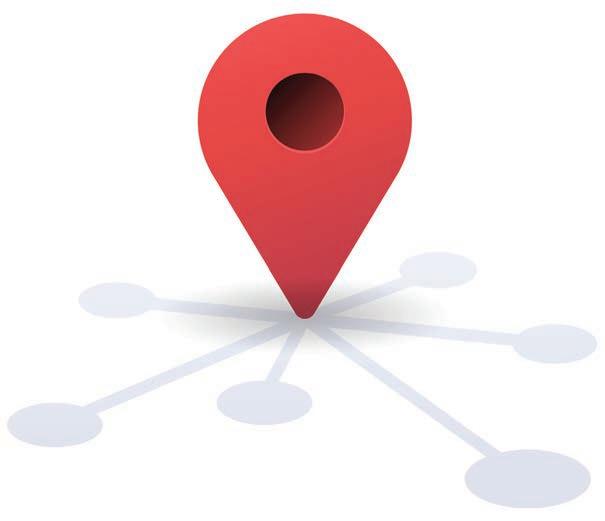
Consider this: Long drives between your mats can eventually wear you down. Besides, it’s not efficient. Why waste your day driving? I chose my locations so I could route my day into a big loop, circling it by the end of the day. I would change it up occasionally to throw off anyone staking things out for when I would show up.
I think a better strategy is to imagine a wagon wheel with your home in the center at the hub, and your mats radiating out like the spokes. No one mat would be very far from your home, allowing you to easily shuffle your visits. Plus, you can still operate your route in a linear loop.
Branding — It helps to develop a catchy common name and logo so customers recognize your other mat(s). Keeping them within a handy distance of each other will make it easier for people to recognize them. If something happens that makes you temporarily shut down one store and you have another easily recognized location, you can steer the customers you would have lost to mat No. 2.
There once was a power outage in the county next to mine. I had a mat near the border that was slammed by an overwhelming number of customers whose home washers/dryers were unusable. We directed people to our other two mats for days because they weren’t too far from each other. Just knowing that your brand has more than one location helps to impress people that they chose an established and growing business.
Exception: Branding your chain with the same name only helps if you operate your mats in a superior way. Otherwise, why would anyone want to seek out only your mats, if there is a competitor who’s just as good nearby?
If you want to open other mats but don’t want to or can’t operate them better than the average mat, then open under different names.
Advertising and Marketing — Since all of your locations can chip in on advertising, you can reach a lot more people and hopefully dominate the advertising in your area, which in turn gives an impression of success
Things are going well! We are showing a consistent 18% revenue increase each day/month and going strong! Thanks again for all your help in getting this rolling, it really is a sweet system.”
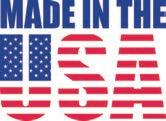

and permanence. Put all of your locations on all your advertising: online, business cards, even the signage inside each mat.
Parts and Supplies — Location No. 2 needs a bill acceptor for a change machine that’s down on a Saturday. That’s a drag, but Location No. 1 has an extra acceptor, so No. 1 saves you from a weekend of stress. Why stock every part at every location?
You Need a Great Crew — All businesses need great workers. You can’t grow your business without them, because you can’t be in two or more places at the same time!
Running a mat absentee is entirely possible if you have some experience under your belt, and if you have a staff you can trust. It all begins with the hiring (see “How to Hire Great Employees,” August 2019), and continues with good management (see “Motivating Employees to Do Their Best,” January 2020).
Once you have your crew, you can check off the rest of the requirements:
While two mats don’t add up to twice the time and work, you still should be realistic about whether you can handle another mat.
You need plenty of capital to launch another store. Don’t over leverage it. Better to wait and save until you have enough money.
I know someone in a supply business who opened one location. It did well, so the owner opened a second, which also did well. This person borrowed against their home to open a third one and, boom, the economy dropped, and then Amazon provided the coup de grâce. The owner ended up losing everything—their three stores and their house.
You need a good surveillance system for each location, with visuals available on your cell phone and other devices you own. If the mats are unattended, I recommend using the public address option that many surveillance systems have.
Multiple Stores Puts You in Better Competitive Position — How many times has your mat been threatened by a new mat opening nearby? If all your mats are within a short drive of each other, and a newbie opens a new mat, you’ll have more clout. Your other mats can carry the one under threat for a looong time. You’ll be able to drop your prices lower than the newbie who surely has big expenses to pay off and make them wish they’d never built that mat.
You’ll build a reputation as a newbie killer among the local distributors. They could steer newbies away from your mats, thereby preventing one from being built in the first place. If a new mat is built, it will most likely not go away, but you’ll send that newbie back to his day job and prevent or cut down the odds that you’ll be seeing another newbie in your area.
Managers and the Peter Principle — I can take or leave managers, because I had more trouble with them than regular crew. It takes a really special person to be a great mat manager, and those people are very rare. If you find one, treat them well.
A manager should have some form of motivating compensation to help them treat the business as if it were their own, such as a “piece of the action” or a bonus every time a sales goal is reached.
Familiarize yourself with the Peter Principle, a concept that states that people are promoted to the level of their incompetence. Just because an employee wows everyone with how well he/she folds laundry, and has a high production rate of drop-offs per hour, it doesn’t mean that he/she will be a great manager. Having been with you a long time should not be your only reason to promote them.
Choose an honest person who has already demonstrated an ability to think on their feet, to defuse angry moments, to be the person who others look to for advice when you’re not around.
Maintenance is More Important Than Ever — If you open new mats, you must be able to maintain them as well as if you still had only the one. Be careful not to bite off more than you can chew.
I needed help with repairs as my business grew, so I stopped doing my own tub bearing jobs, most plumbing work, and certain motor replacements. That helped free me of the heavy “bull” work so I could concentrate more on tech issues, which I preferred. You may grow big enough to hire your own maintenance person.
Communicating with Staff is Much Easier — When I started, there were no cell phones. Not even beepers! I had to routinely check in with my mats each day, usually from pay phones. It was hard to stay on top of everything. Now, technology makes it much easier to communicate with your mats.
I used to post memos behind the counters for my employees. Now, you can do group messages to your crews. You may even get a suggestion or two as you are texting back and forth, plus you have an electronic “paper trail” so no one can argue that you never told them.
Hiring a Laundry “Contractor” — This is an industry standby for people who aren’t interested in the work and headaches of running a drop-off service (let alone pickup and delivery). Instead of micromanaging all your drop-off details, you can make a written contract with your best employee to hire them as a contractor.
There are too many pros and cons (more cons, I believe) for me to list here. You gain some freedom but lose some important controls. Check with your accountant about the tax ramifications.
Legal Considerations — There are different strategies for structuring your business if you have more than one mat.
Some owners want a limited liability corporation (LLC) that owns all the locations. For this, you need to carry enough insurance that will protect the entire chain. The standard used to be $1 million in liability protection for one mat, but nowadays I think you need at least $2 million. If you have one corporation owning multiple locations, you’ll need to protect the entire chain, perhaps $2 million per location. Consult your insurance agent about your specific needs.
I preferred to have separate S corporations for each of my locations, with each having the same DBA name to encourage brand recognition. If one mat is sued, it won’t bring down the whole chain. Yes, it costs more, but you’ll sleep better, especially if each mat has decent insurance.
(Quick tip: Always write business letters and emails from your corporate position, not in a personal way. If you communicate as an individual, your “corporate veil” could be pierced, putting your personal assets at risk.)
To summarize this month, while multi-store ownership could foster some changes, don’t forget what has made your original store a success.
Paul Russo owned and operated multiple laundromats in New York City for more than 40 years before retiring in 2018. You’re welcome to direct any questions or comments for Russo to Editor Bruce Beggs at bbeggs@atmags.com.

Still struggling with a coin shortage? Just tired of dealing with coins? Ready to add a digital payment option to your laundromat but don’t want to spend tens of thousands on a laundry card system? PayRange is the answer. Trusted by over 2,000 laundromats in the US & Canada, our mobile payment system is simple to use, simple to install, and simple to buy! PayRange BluKeyTM devices are $20 each per machine, so a typical laundromat of 50 machines cost $1,000 and allows for digital payments without kiosks, cards, or expensive readers on every machine. Laundry owners can typically self-install their entire store in a few hours, without disrupting business.





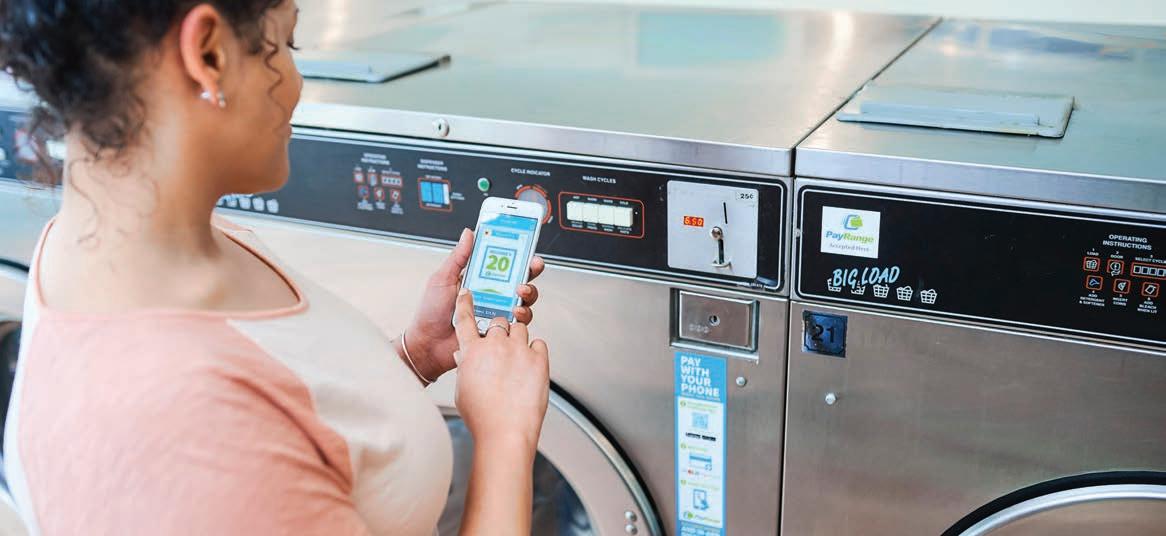
No monthly fees, and transaction rates start at 2.99%. PayRange is the digital payment system of choice! So, don’t waste tens of thousands on an obsolete, difficult to install card system when PayRange is modern and low-cost!

PayRange Inc. has added the BluCard™ modular all-in-one payment device to its network, the company reports.
The device supports all credit card payment interfaces in one small, stylish, and weather-resistant enclosure. The reader is designed for installation on machines to allow

cashless payment with magnetic payment cards, as well as proximity, vicinity, and contact EMV payment cards. Using the 4-inch full-color display, messaging can be created to interact with credit card-based users with custom notifications during card transaction to further drive mobile app awareness, downloads, and user adoption, PayRange says.
With the addition, PayRange says it now offers operators a total payment solution to capture all of their cashless needs, while importantly providing the additional revenue lift benefits of its network.
For operators adding BluCard to their existing PayRange-enabled machines, transactions from the new device will appear in their Manage dashboard alongside BluKey™ transactions, and can be sorted and filtered by the operator if they choose. Sales and fees on a per-device basis are also viewable in the Manage dashboard.
BluCard is available for vending, laundry/laundromat, car wash and amusement machines. The addition of a BluCard or BluKey still allows for cash or coin acceptance if an operator chooses.

www.payrange.com
Electrolux Professional has launched a new line of laundry equipment for laundromats, North American supplier Laundrylux reports. The exclusive range of high-spin 450G washers and highefficiency dryers focuses on providing better customer experience, efficiency, performance and profitability, which Laundrylux says will enable laundromat owners to reach their goals quicker and easier.
Most people don’t want to spend their free time doing laundry but would rather get in and out of a laundromat as quickly as possible, says Gordon Kertland, executive vice president of sales at Laundrylux. “With Electrolux Professional’s fastest ever throughput, customers can do their laundry in less than 45 min-
utes, giving your store a better customer experience and giving them the freedom to take back their time.”
Electrolux Professional washers include:


• 7-inch HD color touchscreen display with 35 languages and “virtually unlimited” program capacity;
• Unique pivoting front-mounted soap dispenser for liquid or powder detergent, softener, and bleach, positioned for easy access; and
• Utility-saving technology that can cut water bills by 50% and reduce energy consumption by 40%, compared to 100G washers.
The 450G extraction is sustained throughout the entire spin cycle, which Laundrylux says has never been achieved before in the industry. The new equipment, including the only HACCP vended washer in North America, can boost revenue and increase customer throughput by up to 38% during peak laundromat hours, the supplier adds.
www.laundrylux.com/electrolux

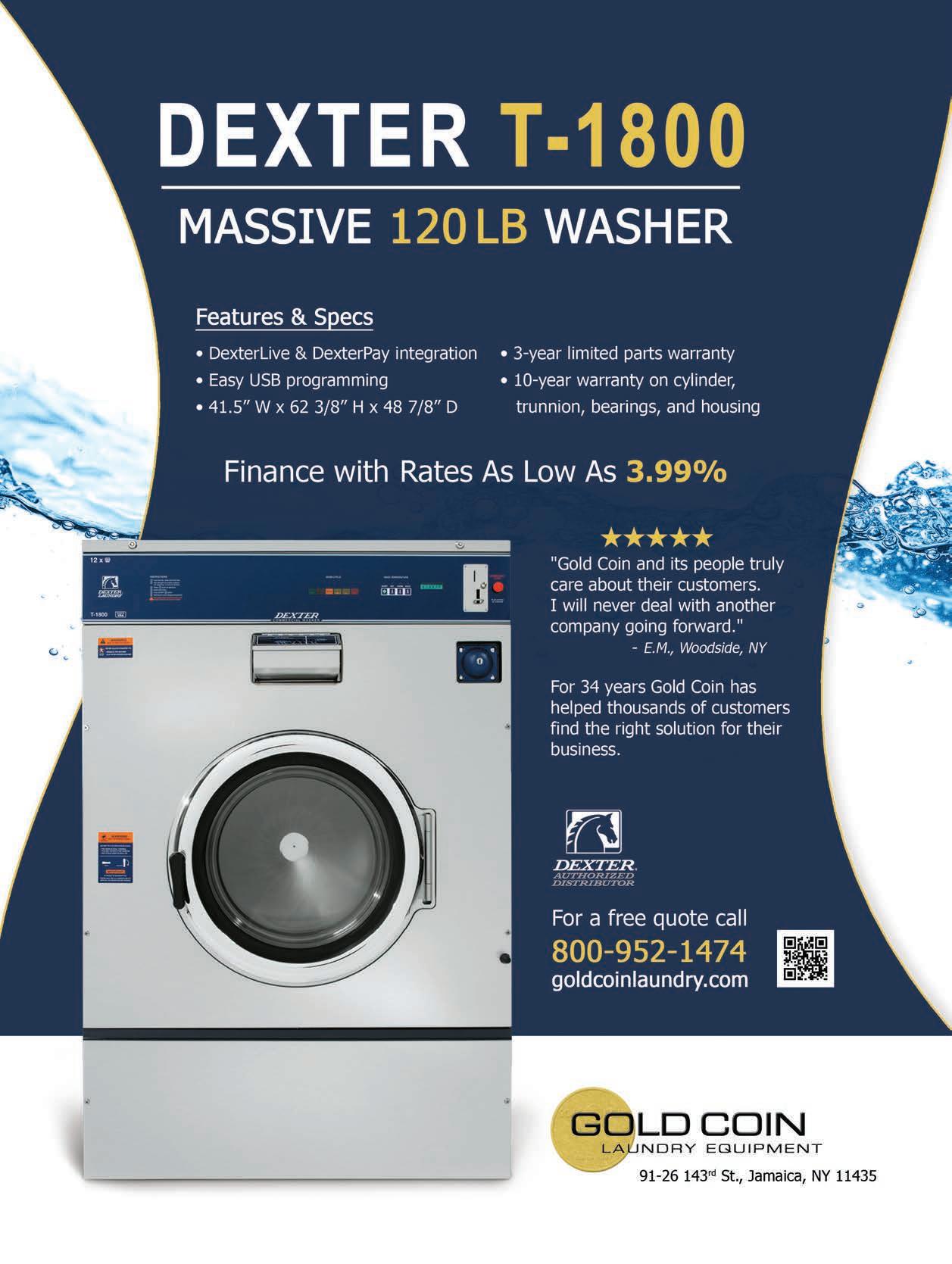
LANDLORD RELATIONS: What’s the Word?



And that’s why maintaining friendly, regular communications with the landlord while backed by a good understanding of what the lease document accommodates puts the laundry tenant in the best position regarding the real estate where their washers and dryers reside.


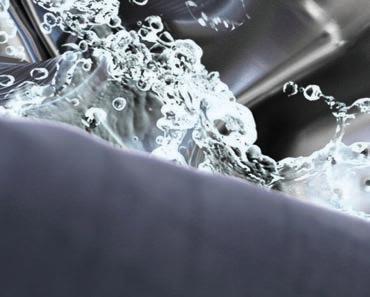

If you’re a renter, what’s your experience been like? Do you check in with your landlord regularly, or is it the landlord who calls on you? How do the two of you communicate? Is your relationship based almost exclusively on your lease and the rent you owe, or has it grown beyond that?
Multi-store owner Scott Roberts operates a pair of New Jersey laundromats located in small shopping plazas. The 2,000-squarefoot Wizard of Wash is in Toms River, and the 1,600-square-foot Suds by the Shore serves the Long Branch community about 40 minutes away.
 Open communication, common understanding keep laundry tenant, property owner on same page
Open communication, common understanding keep laundry tenant, property owner on same page



Robert says his tenant experience has been good for one store but not the other.

any laundromats across the United States occupy rented space, so working cooperatively with the landlord, and within the terms of the lease, can prevent headaches the laundry owner likely doesn’t need.“At the Toms River store, everything was done electronically when dealing with the landlord. It was a standard lease but the process was very easy to switch over, to assign the lease from the prior owner to us. The landlord was very willing to help smooth the process along.
“In Long Branch, the top page of the lease came and it was handwritten. The landlord did not employ any legal assistance throughout the process. Basically, he adopted a mentality of ‘This is my strip mall and you’re going to do what I want.’ Everything was handwritten, all corrections were handwritten on the top of a page. The meat of the lease was basically an internet download of what I would call a standard lease agreement, nothing specific to laundromats. And all addendums were handwritten by him.”
Melissa Berry runs Fort Collins, Colorado’s ExelAnce Laundry, which she named after her children, Drexel and Prudance. The 2,500-square-foot “mostly unattended” store is connected to a gas station on a busy street. While the landlord lives in Nebraska, he’s responsive and has taken care of requested improvements and fixes, she says.
▼










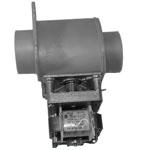

















that had never been addressed and he really wasn’t aware of,” says Berry, who’s worked in laundries for 27 years. “We’ve been working together really well and been able to put in a new rooftop unit, so we actually have heat and air conditioning in our store now.”
When a customer broke out ExelAnce’s entrance doors in a fit of rage, her landlord quickly had them replaced. A couple of water leaks led to installation of a new roof.
Berry says she and her landlord worked together to update a lease agreement he’d been using for some 40 years: “I was lucky and actually got to design my own lease with some parameters that we set. There are certain things I’m responsible for, like the property tax and maintenance on the rooftop unit. Other than that, if it’s part of the building, he takes care of it for us.”
Marc Fuller owns 24 Hour Laundry, which occupies some 2,000 square feet on one end of a strip mall in Charlotte, North Carolina. His portfolio once included two more stores but he sold them shortly before the coronavirus pandemic hit.







“But all three of them, the landlords were totally different, from a mom-and-pop to a big corporation that owned hundreds, if not millions, of square feet. Different cultures. The big-time landlords, their CAM (common area maintenance) fee is astronomical but you call them and they have a management team that can get stuff done immediately. Your mom-and-pop, you might have a problem with your roof and they might prolong it for two months or more, but they don’t have a CAM fee.”
Communications styles and preferences can vary among landlords just as it can among tenants. Most matters can be addressed over the phone or by email, and video conferencing can enable an absent landlord to “tour” the property, but there are times when a personal visit is most effective.
“We start with verbal communication but we move into written communication when we have things that we want to make sure are clearly coming across,” Berry says of her landlord. “After we’ve come to a verbal consensus, we usually convert to an email.”
She favors making contact at least quarterly, just to make sure that everything related to the property is going OK. The property owner travels to Fort Collins periodically and stops by to check on things, she adds.
This type of regular landlord-tenant contact becomes even more important when the tenant wants to renew or extend their lease, Berry says.
Fuller says communicating with his landlord—an elderly Greek man whose first language isn’t English—by phone has been challenging at times. The property owner doesn’t use email, so there’s no paper trail when Fuller reports an issue. “The best thing I have is text messaging his son-in-law who helps him out with certain things.”
“With the Long Branch landlord, it’s all done by phone or in person. With the Toms River one, it’s text messaging. We really just text back and forth,” Roberts says. “(The Long Branch landlord is) an older gentleman. He spins a lot of yarns about tales of his past that you have to sit and endure. If you really want to deal with him, you have to go to his house. … If there are any issues, he’ll mail a handwritten letter telling you what the problem is and what he expects.”
An occasional email or a phone call is enough to keep the landlord-tenant relationship alive, he believes.
“In today’s day and age, if you’ve got a technologically savvy landlord—which I think is most of them—just drop an email and
you’ll get one back,” says Roberts. “I always start with an email and if I don’t hear anything back, then I’ll call if I need to.”
Is it possible that the lease document can help define the relationship between lessor and lessee?
“I think it does, because you’re seeing where they stand on how much responsibility they’re going to put on themselves and how much responsibility they’re going to put on you,” Berry says. “Some of these leases, they put everything on you and they’re responsible for absolutely nothing.”
“Some landlords can be flexible toward the lease,” Fuller says. “Some landlords make the lease bulletproof, but when you talk to the property manager, they’re like, ‘Don’t worry about it, we’ll take care of it.
“I think it comes back … to (having) a personal relationship with the landlord and how flexible they are, or how much they like you or don’t like you, because if they don’t like you, they will enforce the lease to the absolute letter.”
How much does the tenant’s understanding of lease conditions contribute to building a good relationship with their landlord?
“It’s a very big part of it,” Berry says. “If you don’t understand your lease, you leave a lot of open-ended loopholes.”
“I think a lot of people might not read their lease and only figure it out when stuff actually happens,” Fuller comments. “They might have their attorney look over it … and then when something happens, they’ll say, ‘I didn’t know this was in the lease.’”
“I think it’s definitely invaluable,” says Roberts. “If you go into it thinking one thing and you’re surprised later, it could be disastrous for your business. You need to understand the terms very clearly.
“The (laundry) business is a challenging business to begin with, and if you don’t keep your lease straight and you’re not on the same page, it could spell big problems very quickly.”

What are some signs that a landlord-tenant relationship may have hit the rocks?
“With a bad landlord … they rarely return phone calls,” Berry says. “They never want to help out. They blame everything on you. When they start pointing fingers is when I become kind of skeptical of the building itself, because the owner doesn’t seem to be very willing to work with anybody.”
“If a landlord talks about nothing else but money, is very moneycentric,” Roberts says. “The landlord we deal with in Long Branch, every conversation revolves around what is owed to him.”
Fuller says it’s a bad sign when the landlord is “enforcing the lease when they don’t have to.”
There’s nothing set in stone about how often a tenant should look up their landlord, or even if they should want to.
“I typically like to engage with the ‘good’ landlord at least once a month,” Roberts says. “With the one who’s challenging, we have our differences of opinion, so we don’t talk as often, and I don’t see the relationship going much past the terms of the lease. But certainly, if you’ve got a good location and you want to keep going, it’s a good idea to engage with your landlord.”
If you encounter a difficult landlord, or have one that you find particularly challenging to work with, open communication is the best way to resolve issues, he believes.
“If you’re in constant communication with each other, then there won’t be any surprises if something happens,” Berry says.
“I think the best communication is paying your rent on time,” Fuller says.
If you attend one industry event in 2022, The Clean Show should be it! Discover new products, exciting technology, and groundbreaking research in commercial laundering, dry-cleaning, and the textile service industry as exhibitors from around the world showcase their latest innovations. Registration opens this winter. Start making your plans to attend!



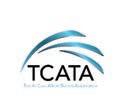














The facilities of commercial laundry equipment manufacturer Pellerin Milnor Corp. in Kenner, Louisiana, sustained minimal damage from Hurricane Ida in August but the homes of at least one-quarter of its workforce weren’t as lucky. Because of this, the company has created an Employee Relief Fund and welcomes donations.
Hurricane Ida made landfall Aug. 29 as a Category 4 storm and it took Milnor several days to return to full production afterward.
“Unfortunately, a number of our employees suffered significant damage to their homes. We received calls expressing interest in helping out Milnor employees during this time. A Milnor Employee Relief Fund is now available for deposits by anyone interested in helping. If you’d like to donate, please send checks made out to ‘Milnor Employee Relief Fund – Ida’ and mail to … PO Box 400, Kenner, LA 70063-0400.”
Milnor expressed appreciation for “the prayers and support” it received from people around the world following the storm.






Laundromat point of sales system CleanCloud and laundry payment systems provider Setomatic Systems-SpyderWash have announced a new cross-platform integration.

The integration of SpyderWash into CleanCloud will give operators increasing flexibility in running their business as laundry cus-
tomers will be able to pay how they want, in a secure all-in-one laundromat payment system, upgrading even the oldest washer and dryer models.
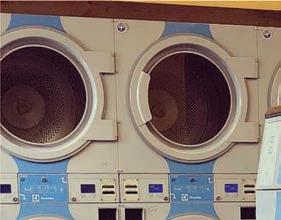
SpyderWash enables customers and employees to start washers and dryers via its card system, which supports contactless card payments while having the option of retaining coin functionality on individual washers and dryers.

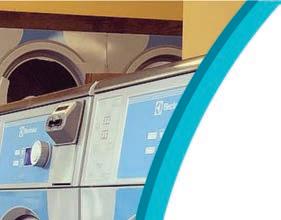
CleanCloud customers manage their laundry businesses with a combination of the companies’ software and hardware, which includes payment solutions, marketing tools, wash-dry-fold management, advanced reporting, pickups/deliveries and much more.
“This integration with SpyderWash helps to simplify the payment flow at the point of sales, and encourage customers to quickly purchase additional services from the laundromat,” says CleanCloud CTO and co-founder David Griffith-Jones.
“This integration not only helps the store owner but also gives the end customer a more convenient, expanded and user-friendly laundry experience,” says Setomatic-SpyderWash Vice President Gregg Schantz. “Being able to use your SpyderWash loyalty card at the POS system is a feature that has been heavily requested over the past year, and we are happy to finally have it.”


Since its launch, principals at LaundroLab say the franchise is continuing to roll into fresh markets, swirling up attention as
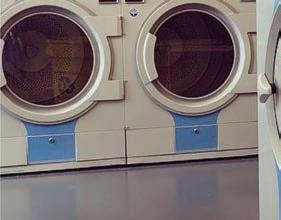
an “industry disruptor.” Even in the midst of a post-pandemic economy, the concept is expanding. In 2021 alone, it has signed on a number of franchisees, tallying up some 17 new units, with other candidates in the wings, company officials report.
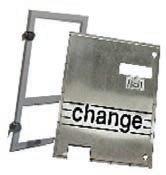

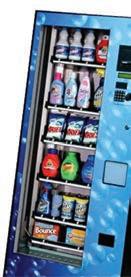
“Let’s face it, there’s a general stain on people’s perception of typical laundromats,” says LaundroLab President and co-founder Dan D’Aquisto. “We’ve heard it all: ‘They’re dirty … they don’t feel safe … they’re boring.’ Sad thing is, so many people still heavily depend on their offerings — they just dread going there.”

In 2016, D’Aquisto and partner Alex Smereczniak opened 2ULaundry, a laundry and drycleaning pickup and delivery service. In 2018, they built their first laundromat to support their service’s growth, using the venture to fine-tune operational structure and put a creative marketing plan in place. In 2020, they pulled the curtain back on their LaundroLab vision.
Today, the North Carolina-based franchise has dialed up inventiveness. Each LaundroLab location offers a vibrant space, bubbling over with safety features, state-of-the-art Electrolux equipment, payment technology, and amenities to pass the time.
“Going forward, the plan is for aggressive, strategic expansion throughout the country,” says D’Aquisto.




Commercial laundry equipment manufacturer Girbau North America (GNA) hired Melissa Kuhn as digital marketing manager, responsible for planning and executing GNA’s digital marketing and advertising strategies and social media campaigns.
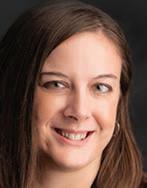
Kuhn brings more than nine years of marketing and digital mar-
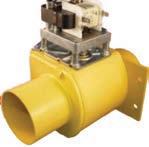



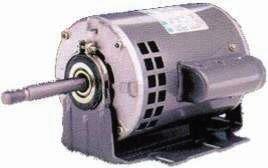

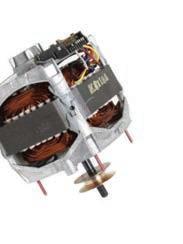
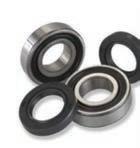

keting experience to the company.





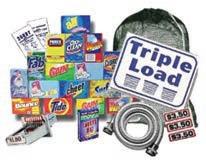
“GNA has grown considerably over the years in terms of its brands, products and staff,” says Director of Marketing Communications Tari Albright. “This is the company’s first dedicated digital marketing management position and we are happy Melissa is at its helm. Her high-level skills and positive attitude perfectly fit our productive company culture.”
Kuhn served four years as marketing manager for Optima Machinery Corp., in Green Bay, Wisconsin, where she managed marketing strategy, budget and communications; created and led advertising, public relations and digital marketing campaigns; and worked closely with a diverse sales team. Prior to that, she served five years as marketing associate for The Boldt Co., Appleton, Wisconsin.
A 2011 University of Wisconsin Oshkosh graduate, Kuhn has a bachelor’s degree in English/journalism.
“I am excited to really shape the digital marketing strategy for GNA and will be focusing on growing our social media following, targeted email marketing, and digital inbound marketing campaigns, among other digital marketing efforts,” says Kuhn. “I have a passion for digital marketing and am looking forward to putting my experience to good use in my new role.”
GNA is the largest of 17 subsidiaries of Girbau Global Laundry

Huebsch washers for sale
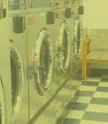



B micro control, card or coin operated still in use very nice equipment.

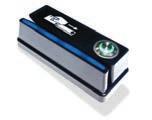
See Bottom of ad for cash package price


(5) HC60BY 60 LB $3,200 each
(8) HCS0BY 50 LB $2,200 each (12) HC30BY 30 LB $1,200 each
All are 208-240/60/3 stainless steel cabinets

(6) Huebsch soft mount front load washers Model HFNKY 110 volt plug in stainless $1,200 each
(6) Speed Queen horizon soft mount Model SWFC 110 volt plug in white $600 each
Owner is motivated to sell package price for all 45,000 or piece by piece total 58,800 call 269-209-8378


Repair Front Load WASHER Bearings.

Rebuild drums available. Serving the East Coast. Call Tony: 508-933-4369

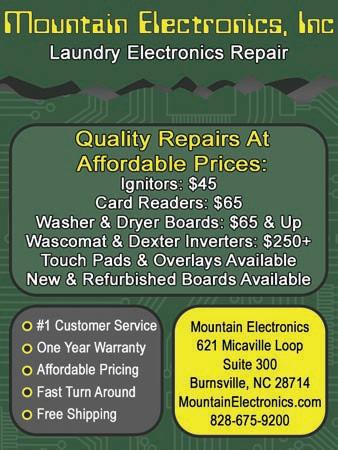
Trade Magazines LLC, 650 West Lake St., Suite 320, Chicago, IL 60661-1036 Cook County. Bruce Beggs, American Trade Magazines LLC, 650 West Lake St., Suite 320, Chicago, IL 60661-1036 Cook County. Donald Feinstein, American Trade Magazines LLC, 650 West Lake St., Suite 320, Chicago, IL 60661-1036 Cook County. Nathan Frerichs, American Trade Magazines LLC, 650 West Lake St., Suite 320, Chicago, IL 60661-1036 Cook County. John S Suhler, 200 Long Neck Point Rd., Darien, CT 06820 Fairfield County. 13. Publication Title:
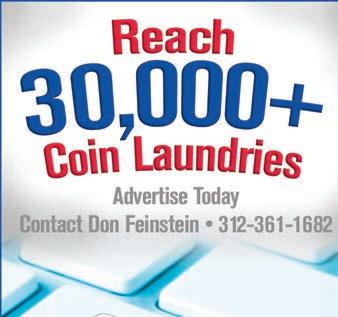


exchange copies.) X=0, Y=0. (3) Sales Through Dealers and Carriers, Street Vendors, Counter Sales, and Other Paid or Requested Distribution Outside USPS®: X=0, Y=0. (4) Requested Copies Distributed by Other Mail Classes Through the USPS (e.g. First-Class Mail®): X=0, Y=0. (c) Total Paid and/or Requested Circulation (Sum of 15b (1), (2), (3), and (4)): X=7,722, Y=7,211. (d) Nonrequested Distribution (By Mail and Outside the Mail). (1) Outside County Nonrequested Copies Stated on PS Form 3541 (include Sample copies, Requests Over 3 years old, Requests induced by a Premium, Bulk Sales and Requests including Association Requests, Names obtained from Business Directories, Lists, and other sources): X=3,609, Y=3,684. (2) In-County Nonrequested Copies Stated on PS Form 3541 (include Sample copies, Requests Over 3 years old, Requests induced by a Premium, Bulk Sales and Requests including Association Requests, Names obtained from Business Directories, Lists, and other sources): X=0, Y=0. (3) Nonrequested Copies Distributed Through the USPS by Other Classes of Mail (e.g. First-Class Mail, Nonrequestor Copies mailed in excess of 10% Limit mailed at Standard Mail® or Package Services Rates): X=0, Y=0. (4) Nonrequested Copies Distributed Outside the Mail (Include Pickup Stands, Trade Shows, Showrooms and Other Sources): X=2, Y=2. (e) Total Nonrequested Distribution (Sum of 15d (1), (2), (3) and (4)): X=3,611, Y=3,686. (f) Total Distribution (Sum of 15c and e): X=11,333, Y=10,897. (g) Copies not Distributed (See Instructions to Publishers #4, (page #3)): X=542, Y=534. (h) Total (Sum of 15f and g): X=11,875, Y=11,431. (i) Percent Paid and/or Requested Circulation (15c divided by f times 100): X=68.1%, Y=66.2%. 16. Electronic Copy Circulation: (a) Requested and Paid Electronic Copies: X=491, Y=104 (b) Total Requested and Paid Print Copies (Line 15c) + Requested/Paid Electronic Copies (Line 16a): X=8,214, Y=7,315. (c) Total Requested Copy Distribution (Line 15f) + Requested/Paid Electronic Copies (Line 16a): X=11,822,

Solutions, based in Vic, Spain. Its brands include Continental Girbau®, Girbau Industrial®, Sports Laundry Systems®, Poseidon Textile Care Systems®, Express Laundry Centers® and OnePress Ironer®.
NEW LOCATIONS POPPING UP FOR HAPPYNEST
Tech-enabled laundry pickup and delivery service HappyNest continues to expand, announcing that its services are now available in new locations in several states.
Port City Cleaners, owned by Amber Knott, has brought the service to Mobile and Baldwin counties in Alabama. Knott owns six laundromat locations, and her facility located on Merwina Avenue in Mobile is fulfilling HappyNest pickup and delivery laundry orders.
Legacy Laundry, located in Tacoma, Washington, and owned by Michael Welker, is now serving HappyNest customers in various Pierce County communities, including Vaughn, University Place, Puyallup and Sumner.
Zap Laundry’s 4,000-square-foot facility in Jersey City, New Jersey, is bringing HappyNest’s service to residents and businesses in the area, including Bayonne, Hoboken, Weehawken, Union City, West New York and Secaucus. The owner is Andrew Sinetar.
North Carolina has its first HappyNest partner in Wendover Wash N Dry, a 2,000-square-foot laundromat in Charlotte that is owned by David May.
HappyNest added Arizona to its growing list of states via new partner Wingfoot Laundromat, located in Chandler and owned by Erin Synkowski. The service is also available in Gilbert, Mesa, Queen Creek and Tempe.
Amigo Wash and Dry in Fort Worth, Texas, has brought HappyNest service to customers throughout Tarrant County, including the cities of Arlington, Grapevine, Hurst and others. The 5,500-square-foot laundry is owned by Aman Shaikh.
Douglas and Johnson counties in Kansas now have access to HappyNest pickup and delivery thanks to new partner Lawrence Laundromat and owner Ross Razak.
HappyNest says it works with local, efficient laundromat partners who are meeting the demand for pickup and delivery laundry services, while utilizing machines during slower times, subsequently boosting sales.
Laundry service franchise Mr Jeff has welcomed Peter Stern to its team as the new managing director in the United States.
With more than 20 years of laundromat industry experience, Stern will play a critical role as Mr Jeff pushes to become the premier U.S. laundry service company through building a store network with stellar operators, the company says.
Mr Jeff has started a pilot project to open several flagship hubs inside existing Clean Rite laundromat locations in New York and Ohio. Its first such hub, in the New York City borough of Queens, opened in late summer.
Stern’s expertise includes store operations, finance, business development and innovation.
“The Mr Jeff business model along with its technological innovation, marketing expertise and ability to incubate strong store operators into this industry is the most compelling force of change I’ve seen in my 20 years in this industry,” says Stern, who led the due diligence effort securing a multimillion-dollar investment in Mr Jeff.
Prior to joining the franchisor, Stern was senior vice president of Laundry Capital and managing director of Clean Ventures, and owned/operated the Great American Laundromat in the Bronx, one of New York City’s highest grossing laundries, Mr Jeff says.

Shortly after resigning from her role managing eight locations with Splash ’Em Out Coin Laundry in Kentucky, Chelsea Ramsey has joined the staff of Wash-Dry-Fold POS, a supplier of point-of-sale systems for laundromats, as its Customer Success manager.
“Not only had she already taught dozens of laundromat attendants how to use our systems, she had even recorded training videos of our product to help train her team,” says Brian Henderson, founder of Wash-Dry-Fold POS. “It showed initiative and a passion for helping others.”
“With a knack for technology, Chelsea was looking for remote work that would allow more time with her son. She asked if there was anything she could do to help us,” explains co-founder Ian Gollahon. “Even though it wasn’t publicly posted, we were already conducting interviews for a support position, so the timing was perfect.”
In 2021, the Coin Laundry Association is marking its 60th year of service and dedication to laundry owners across the country.
Originally known as the National Automatic Laundry and Cleaning Council, the not-for-profit association was established in 1961 in Chicago. From its founding, the mission of the organization—renamed the Coin Laundry Association in 1983—has been to provide education and service to the entrepreneurs within the laundry business; to protect and advocate for the best interests of store owners across the country; andgenerally to work toward a more professional, successful and profitable laundromat industry.
“Over the last 60 years, the CLA has helped thousands of would-be entrepreneurs achieve the dream of laundromat ownership, as well as helping those operators get the very most from their businesses,” says CLA President and CEO Brian Wallace. “Along the way, the association and its staff have evolved and grown to meet the ever-changing needs of the CLA’s members and the laundromat marketplace in general.”
An in-person celebration is slated atthe association’s exclusive ELEVATE event Nov. 11-12.
“Affiliation with the CLA, its members, its staff and, of course, my fellow board members has truly been enriching,” says CLA Chair Kathryn Rowen. “Let’s all take advantage of this opportunity to remember what has made the laundromat industry so special over the last 60 years, and to consider how we all can work together toward an even brighter future.”
LG Commercial Washers and Dryers reduce energy consumption and increase customer turnaround. Drive profit with energy efficiency.
The compact 27-inch cabinet combined with a large door opening and 22-pound wash capacity drives vend price and revenue in the same space as competitive 20-pound models.
The Atomizing nozzle sprays fresh water onto the clothes and the door. This helps clothes soak sooner and longer, providing a better washing performance. It also cleans the door glass every time the water sprays, reducing your burden of cleaning excess soap residue. Twin Spray circulates soapy water, increasing wash performance and water visibility.
LG’s commercial washer tub is tilted 10°. It enables the washer to have higher water level compared to competitors. This allows us to use less water while not sacrificing superior wash performance.

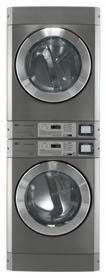
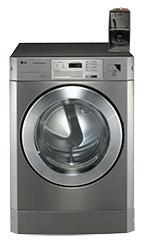

Success starts with LG. Contact us at 800-256-1073 to get started with LG. lg.com/us/business/commercial-laundry
